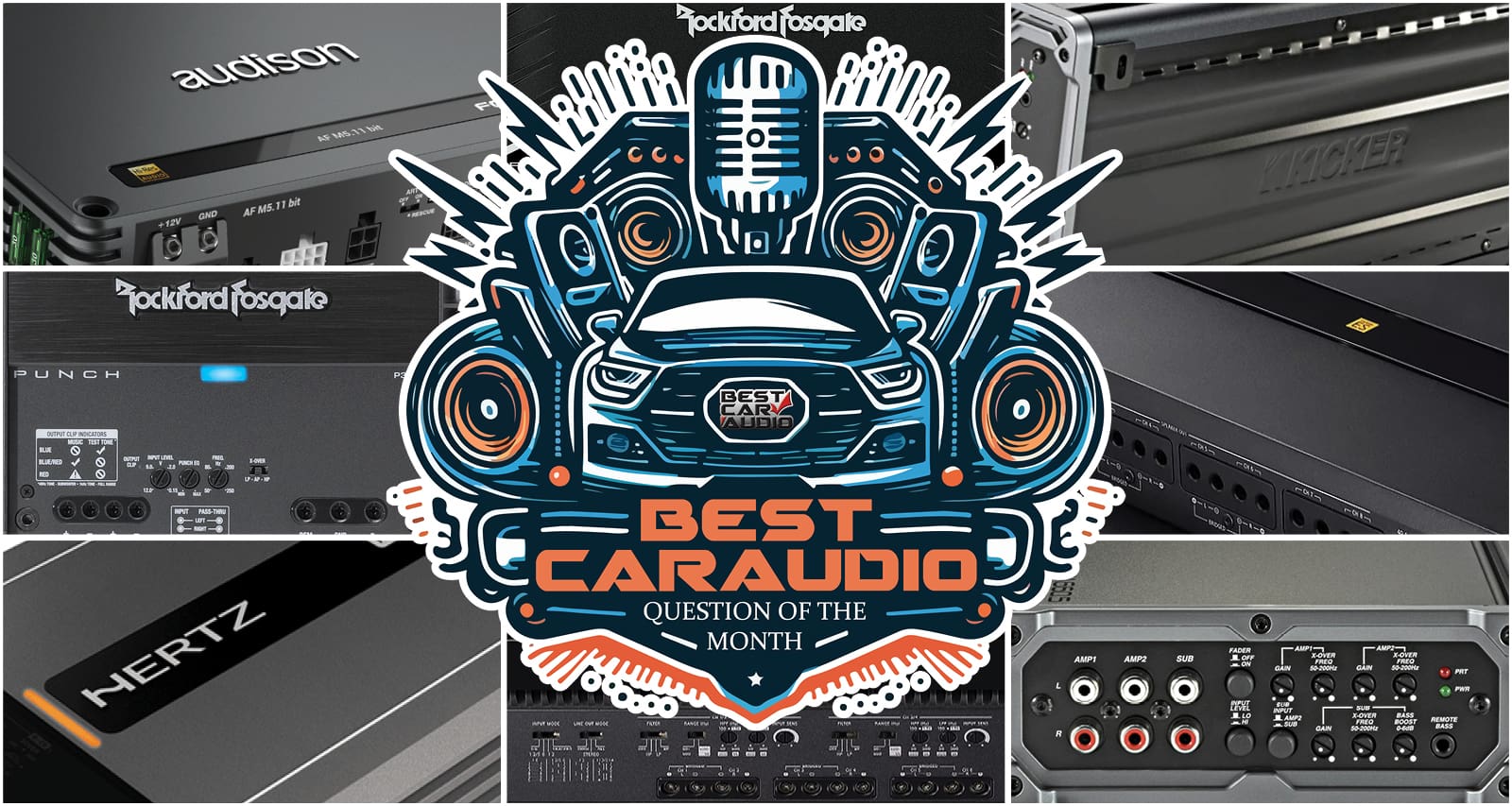It’s May 1, and car audio enthusiasts are shopping for system upgrades. Car audio amplifiers are one item consumers find difficult to quantify regarding performance, quality and value. We often see people buying noisy, low-efficiency, unreliable amplifiers, and it hurts our hearts. As such, we’ve put together this mega-article for the Question of the Month to help consumers weed out the also-rans from truly great amplifiers. So, let’s dig into how to choose a good car audio amplifier.
Application – Full range, Subwoofer or System Amplifier
Before you can even dream of visiting a local specialty mobile electronics retailer to purchase an amplifier, you must know the application. Are you in search of an amplifier specifically designed to power subwoofers? Do you need an amp for the front and rear speakers? Perhaps you want a single-chassis solution that will run speakers and a subwoofer. At this point, we don’t want to think specifically about amplifier channels but consider the application. Provide that information to the product specialist you’re working with as a starting point.
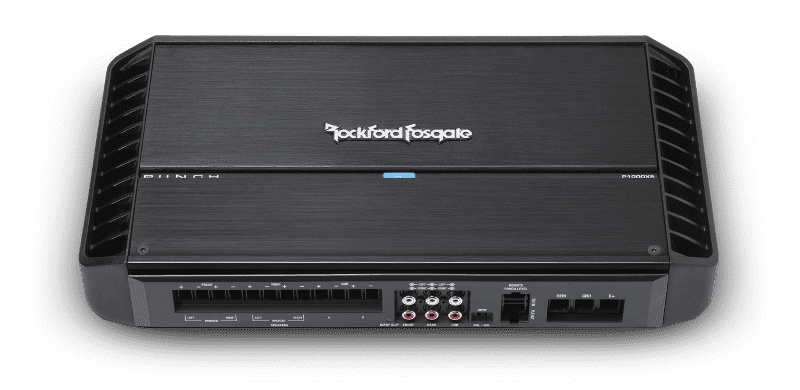
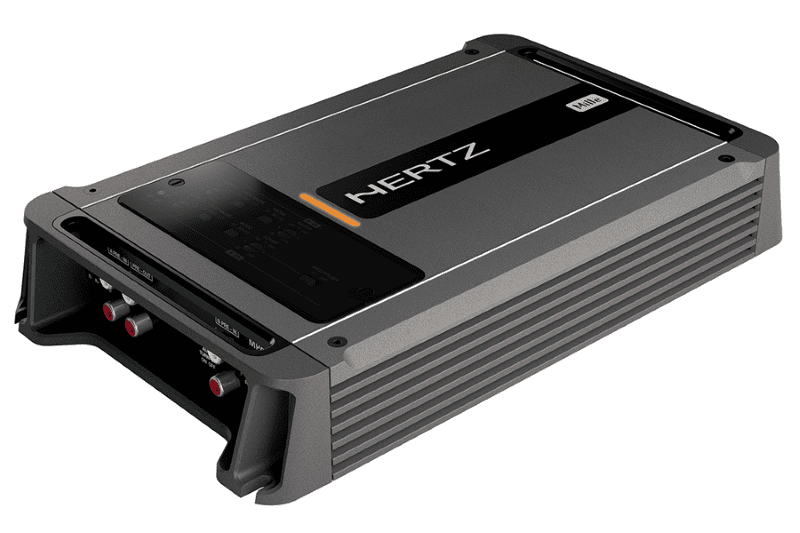
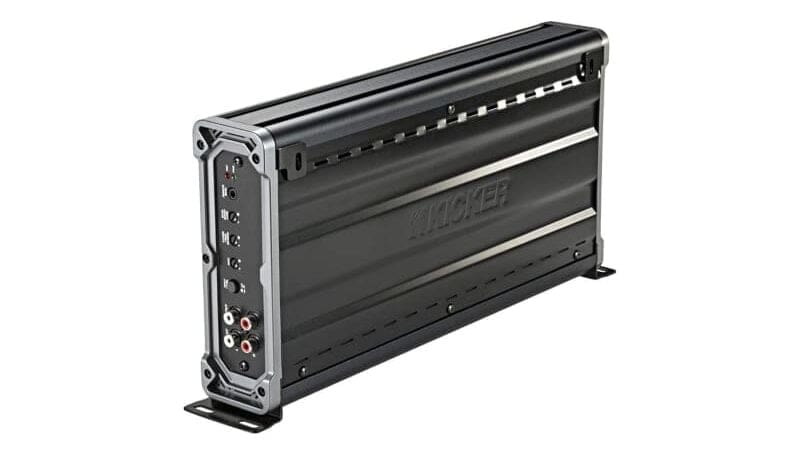
Number of Channels
If you need an amp for a subwoofer, chances are you only need a single channel. Unless you’ve had subwoofers installed in the front kick panels, your installer will unlikely configure bass frequencies to run in stereo.
For full-range applications, the number of channels depends on the system design and the signal processing you might use. If you have a set of coaxial speakers in the doors, then you may only need a two-channel amp. If you want to run front and rear coaxial speakers, then a four-channel amp may be all you need. If you want something more elaborate, you may want a six-channel amp to run rear speakers and a set of components for the doors and dash. If the passive crossovers included with the speakers have dedicated inputs for the woofer and tweeter, assigning an amp channel to each will give your installer precise control over output levels. An eight-channel amp would let you add a set of dedicated midbass drivers to create a three-way speaker system in the front and still power rear speakers.
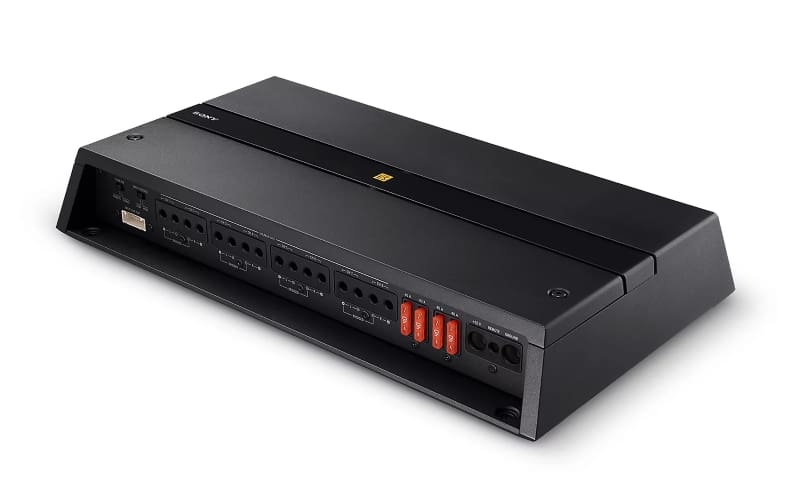
Digital Signal Processor-Equipped Amplifiers
If you’re looking for the ultimate bang for the buck regarding an audio system upgrade, you’ll want to add a digital signal processor to your car’s audio system. A DSP is, in short, a computer-controlled integration processor, crossover and equalizer in a single package. Most companies that make good-quality amplifiers have products with built-in digital signal processors.
Picking the proper DSP-equipped amp must start with a detailed system design. How many speakers are in the vehicle? Each speaker should have an amplifier channel to maximize the system’s performance. If you listen at higher volume levels, you may want to bridge a pair of amplifier channels onto the midbass speakers. If you want a single-chassis solution to power a subwoofer, you may want a dual-voice coil subwoofer and bridge two channels to each voice coil. Make sure it’s bridgeable for maximum system design flexibility, no matter what amp you choose.
Once you know how many speakers you want to drive and how the amp will be configured, you’ll know how many amplifier channels are required. DSP-equipped amplifiers are available with as few as one channel and as many as 12 channels, and there are often additional outputs on those units to provide processed signals to other amps.
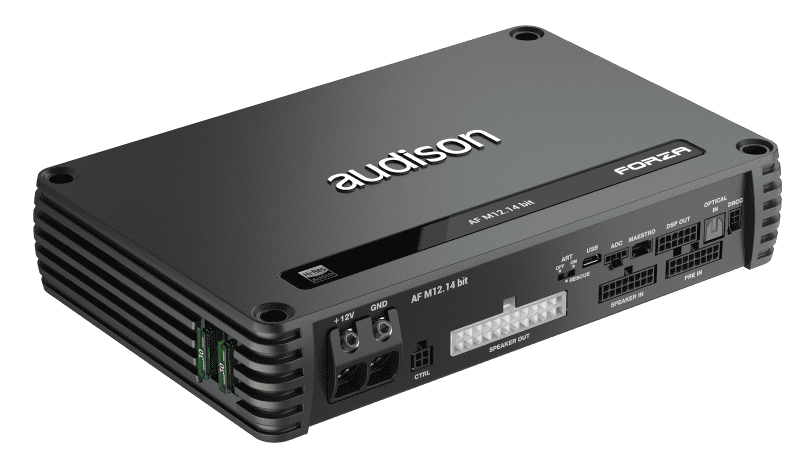
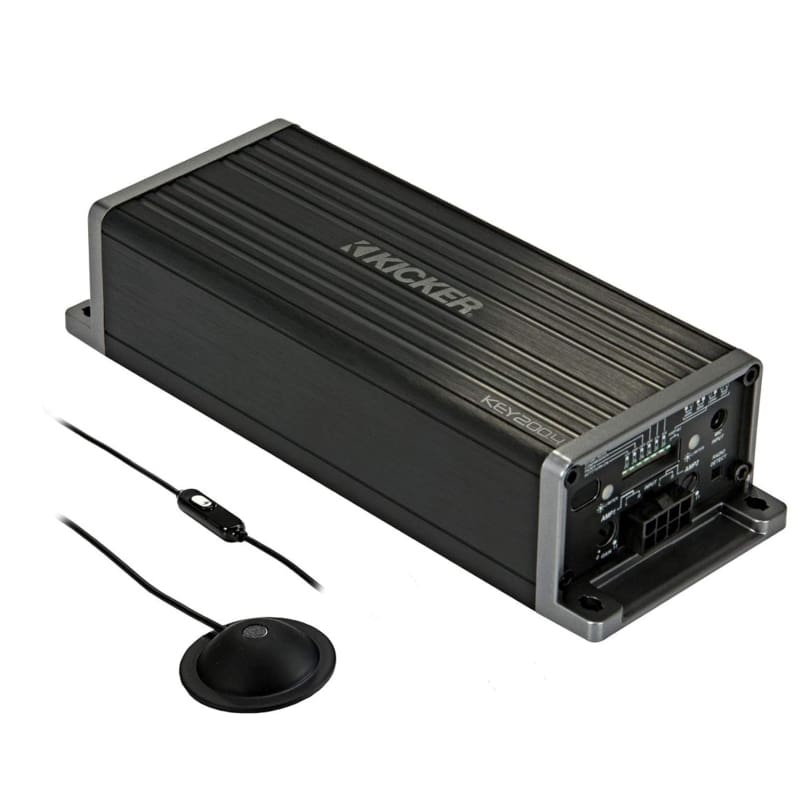
Cosmetics
Everyone has preferences when it comes to cosmetics. You’ll find that most high-end car audio amplifiers use cast aluminum heatsinks these days. While more costly to manufacture, the added heatsink area and mass on the ends can be quite beneficial. You’ll find that most amps are black or dark gray with some machined accents. When installed under a seat, in the rear parcel shelf or even behind a trim panel in the cargo area of an SUV, subtle cosmetics help the amp look like it belongs as part of the vehicle.
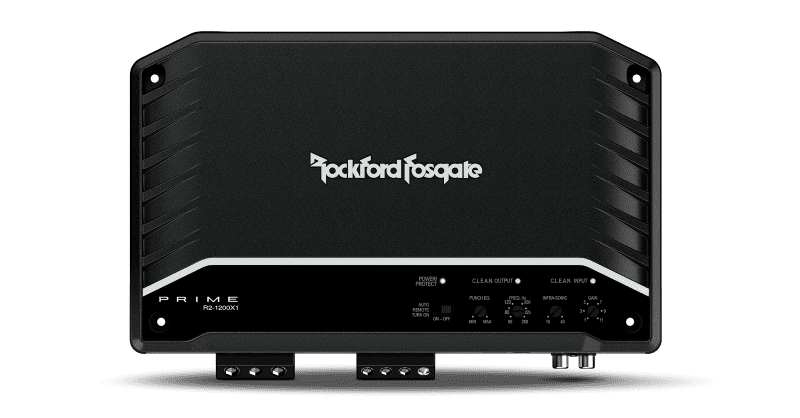
Heat Management
Many low-end amplifier companies fail to integrate effective thermal management into their products. Keeping the components in an amplifier as cool as possible is the key to longevity. Two common methods are used to manage heat: high-mass heatsinks and cooling fans. A high-mass heatsink is just what it sounds like: a relatively large block of aluminum that includes fins or other features to help manage heat from the switching devices. Cooling fans are the second option to control heat. The fans should be configured to draw air along a heatsink to improve thermal performance. Fans should also be thermostatically controlled so they only run at full speed once the amp is warm.
It’s crucial to note that a fan in the end panel or on the bottom of an amplifier offers little benefit compared with designs that work with internal heatsinks. Vents stamped into a bottom plate do almost nothing to allow heat to escape from the amplifier. Proper thermal management is essential in designing an amplifier.
Several companies have performance benchmarks for their amplifiers. For a Class AB amp, the device should operate at 1/3 rated power into its lowest rated impedance for at least 20 minutes. For Class D amps, thermal stability tests should be run at full power, and once again, the amp should run for 20 minutes. We’ve tested many amplifiers that shut down in under three minutes.
Ask the product specialist you’re working with about how the amplifier they suggest manages heat.
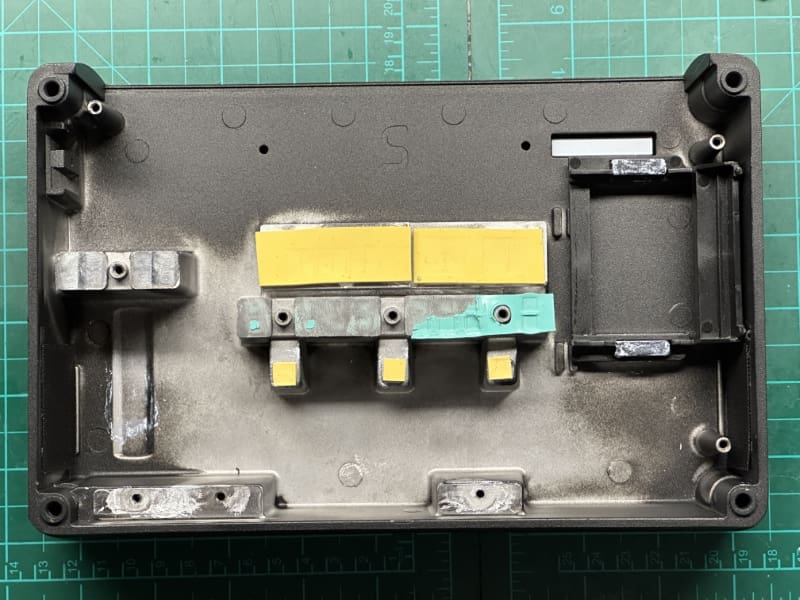
Amplifier Efficiency
With the electrical system in new cars and trucks being smaller than ever, amplifier efficiency continues to be important. It should be no surprise that a Class D amplifier is more efficient than a Class AB design. However, assuming all amplifier designs of the same topology are the same in terms of efficiency is unwise. We’ve tested Class AB amplifiers that offer 67% efficiency and Class D amps below 58%.
A good Class AB amp that doesn’t use a tracking power supply (Class G or Class H) should be around 65 to 70% efficient. Class D amplifiers should be 80 to 90% efficient at full power. In reality, the benefits of the different topologies are more prominent at lower power levels.
What happens when an amp isn’t efficient? The energy from the vehicle battery is converted into heat rather than power to the subwoofer. The result is that the electronic devices in the amp get very hot, which affects their performance and longevity. If the amp doesn’t have a well-executed design, it can overheat and shut down quickly.
Amplifier Size
There’s been a trend in the last decade to cram as much power as possible into a small chassis. We can tell you without hesitation that this design approach has no performance benefit. Small amplifiers will heat up faster, causing them to shut down sooner than an equivalently powerful large amp. The proximity of the power supply in the amplifier to the audio signal path increases the probability of noise being present in the output signal. There are some impressive small amps on the market, but they’re the exception rather than the rule. Size is key when shopping for an amp for a motorcycle audio system. A larger platform is a better choice if you want something that will last a long time and sound great.
Signal Processing Features
Aside from DSP-equipped amplifiers, you should look at the signal processing features on the amp you have in mind. What is the frequency range and slope of the crossovers? Does a subwoofer amp have an infrasonic filter? Are there signal-summing options? Does a full-range amp have band-pass crossovers for midrange speaker applications?
Before you purchase, the audio system should be drawn out on paper with all the signal routing and planned crossover points. This information should be cross-referenced with the proposed amplifier’s capabilities. For example, running a high-quality 3.5-inch midrange speaker in a dash location will likely need a high-pass crossover frequency of around 200 to 250 Hz and a low-pass of around 4 kHz. Make sure the amp can do that.
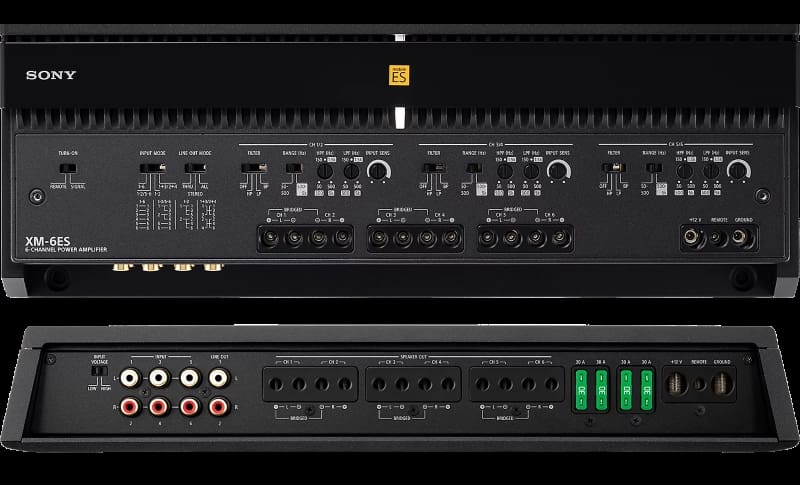
Gain Controls
A high-quality amplifier is expected to have some sort of input signal attenuation or sensitivity control. Unlike home audio equipment, where the output of a CD player has a maximum fixed voltage, car audio receivers might produce anything from 1 to 8 volts. Our amplifiers need to be capable of reaching maximum power with signals across that range. We also might need to use the sensitivity control to reduce the output level of an amp running a set of tweeters to ensure that the system is properly balanced.
Most amplifiers use a single gain control for a pair of channels. Some higher-end models have a gain on each output. When a single control is used for two channels, there can be slight imbalances between the settings for the right and left. Individual gain controls give your installer more precision in making your car’s audio system sound good.
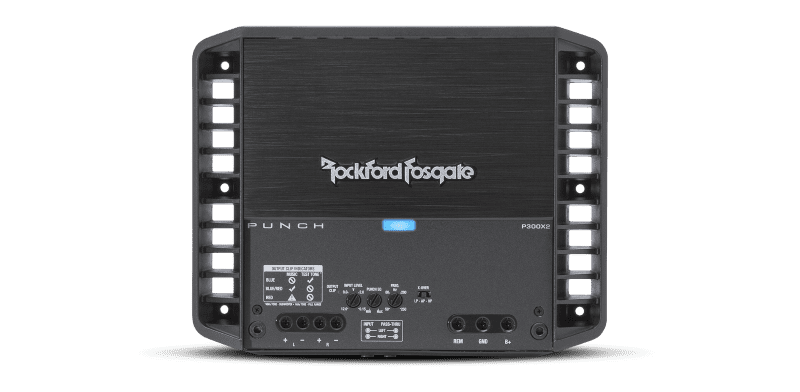
Speaker-Level Inputs
Speaking of input signals, your amp must accept signals from the source unit you plan to use. If you have an aftermarket radio, pretty much any amp will work. If you hope to have an installer connect your amplifier to the output of a factory-installed radio or amplifier, it will need speaker-level inputs. A standard car radio with a chip-based, built-in amplifier might produce a 9-volt RMS signal. That’s more than what the RCA inputs on most amplifiers can handle. As such, they should have a second set of inputs or an input voltage selection switch to deal with these higher voltages.
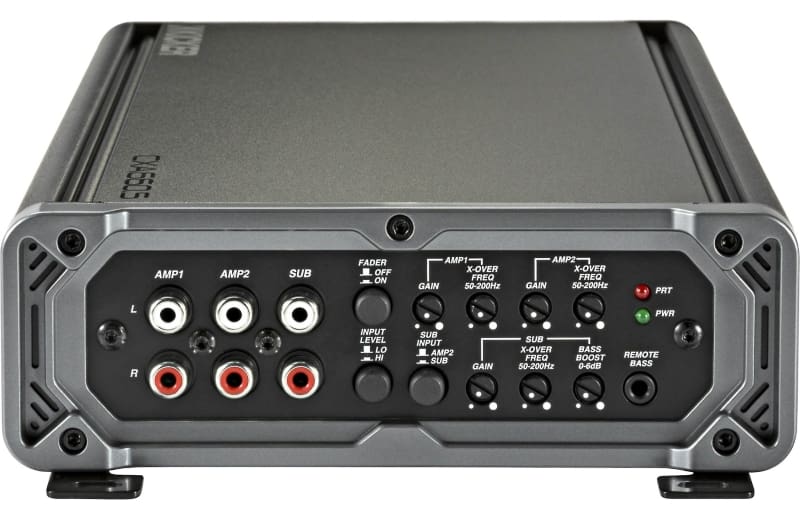
Speaker Load Simulators
As an extension of the speaker-level inputs, some radios and factory-installed amplifiers require the presence of a relatively low impedance load for them to operate. Some amplifiers, typically those with digital signal processing, have load resistors built in so that the source device will function properly.
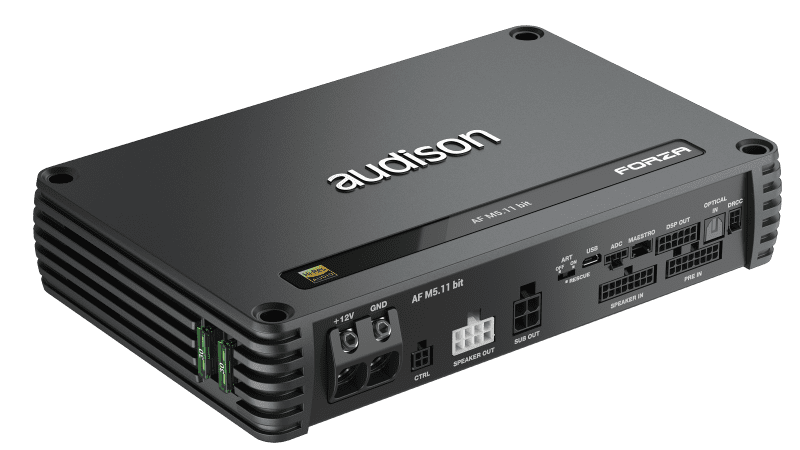
Specification Standards
Before we discuss specifications like continuous output power, signal-to-noise ratio or total harmonic distortion and noise, we should clarify that many companies fudge these measurements by excluding some test conditions. If you want to trust the numbers you see on a website, they should comply with the ANSI/CTA-2006-D standard.
For example, measuring the signal-to-noise ratio of an amplifier at its maximum rated output compared with a 1-watt level will increase the signal-to-noise spec by as much as 20 dB. Not specifying the percentage of distortion in a power output measurement could inflate the number by 10 to 20%.
Look for specifics regarding specification measurements like voltage tolerance or percentage distortion, or better yet, buy products from companies that use the CTA-2006-D standard.
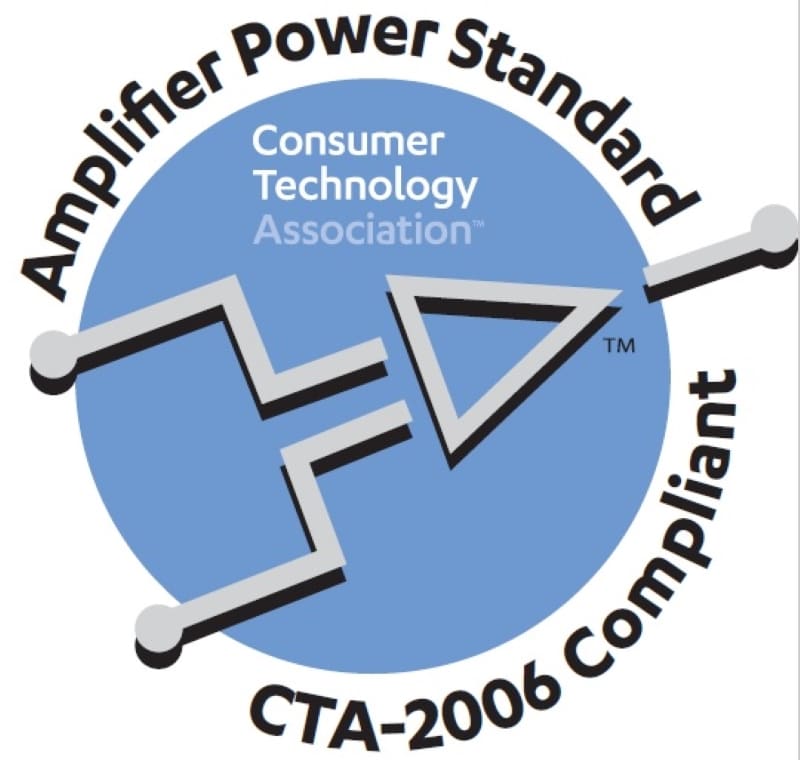
Power Ratings
Amplifier power ratings are easily the most over-emphasized consideration when purchasing a car audio amplifier. Power production has nothing to do with quality, reliability or performance unless you’re building a competition-level SPL vehicle. There are magnificent-sounding amplifiers that only produce 5 or 6 watts of power and atrociously noisy amps that produce hundreds of watts per channel.
When picking an amplifier, you want to choose a size range. The amp in a radio can produce 15 to 20 watts of power. A small “power pack” size amp might produce 40 to 50 watts of power. A moderately powerful amp might be 60 to 80 watts per channel. Finally, a large full-range amp might be 90 to 130 watts of power. All of these numbers represent output in 4-ohm loads. There will also be some high-power amps that can produce up to 300 watts of power per channel. These monsters might be ideal for subwoofers or maybe a robust set of midbass drivers. You will likely never use all that power on anything but a subwoofer.
When it comes to subwoofer amplifiers, you should match the continuous power ratings of the amplifier with those of the subwoofers you plan on using. For example, if you have a 300-watt continuous 12-inch subwoofer, you don’t need a 1,200-watt amplifier.
Despite their published specifications, your tweeters can’t handle more than 10 watts of power, and a high-quality midrange driver can’t handle more than 50 or 60 watts. Please read our article on how speaker power ratings are published for a thorough explanation.
Another critical factor in power specifications is that the amp must be measured with all channels making their maximum output. Some companies undersize the power supplies in their amplifiers and then rate them with some channels driving midrange speakers or tweeters. This method inflates the power available from the amp. The ANSI/CTA-2006-D measurement standard requires that all channels be driven to their maximum power limit.
Finally, bursts or dynamic power numbers are irrelevant. Continuous power ratings should be taken with the amplifier producing that power for at least 15 seconds.
The bottom line is that if you’re shopping for amplifiers based on their power ratings, you’re likely misguided. Look for specifications that quantify accuracy and efficiency; those are more important to sound quality.
A suitably qualified power specification would be 100 watts/channel, @ <1.0% THD+N, 14.4 volts with all channels driven.
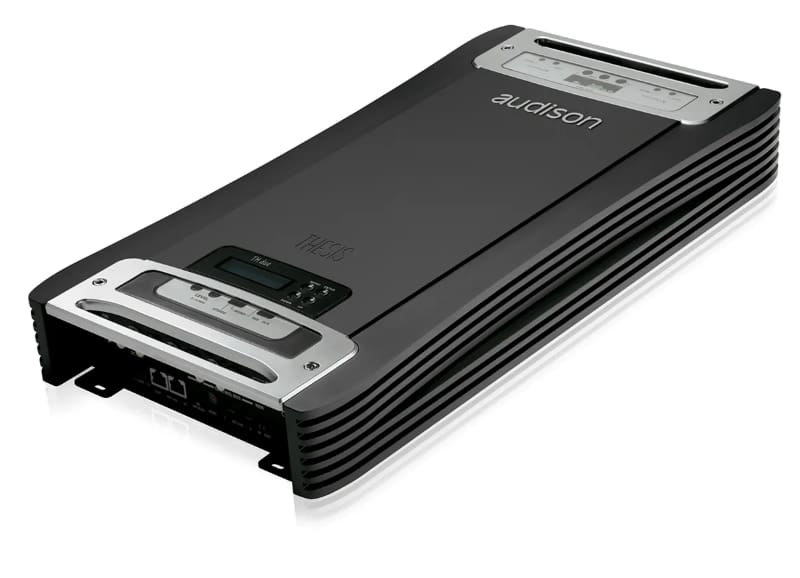
Frequency Response
Not all amplifiers reproduce all audio frequencies at the same amplitude. We call this frequency response. You might want an amplifier that can play infrasonic frequencies well for a massive subwoofer. As such, you might want to choose an amp with a -3 dB point under 10 Hz.
Unfortunately, frequency response matters most in Class D amplifiers used with full-range speakers. The amplifier’s output impedance ratio to the load impedance can change how loudly different frequencies play. No manufacturers publish this information, making picking an amp that sounds good quite difficult. The easiest solution is to add a digital signal processor to the system. A DSP will allow the technician working on your car or truck to fine-tune the system’s frequency response to something you enjoy.
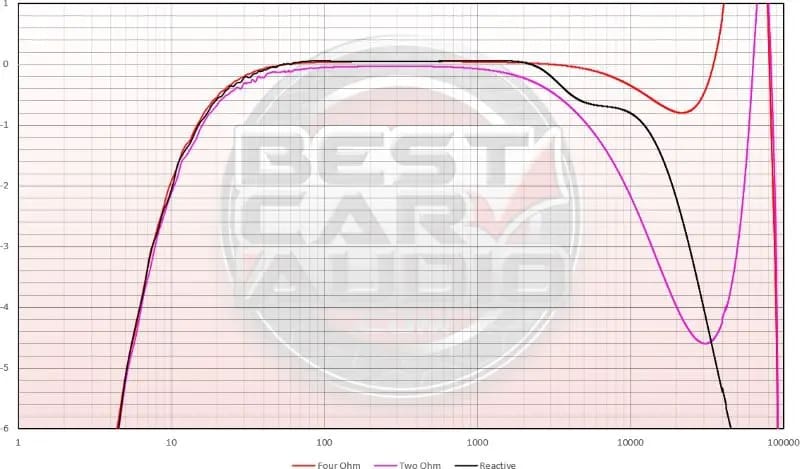
For raw frequency response specifications, you’ll need to see specific tolerances in the specification for the data to be relevant. A tolerance of -3 dB is typical, but some list the performance within a -1 dB window. An example would be 20 Hz to 20 kHz, +0, -3 dB.
Noise Specifications
An often-overlooked quality specification for car audio amplifiers is the signal-to-noise ratio specification. This number, expressed in decibels, describes how much noise or hiss an amplifier adds to the audio signal that passes through.
First, you should know that the published number should be referenced to an output level of 1 watt into a 4-ohm load and not rated power. Higher numbers are better. You will see the best specifications in the 100 dB range, or maybe a little higher if A-weighting has been applied. Most high-end amplifiers will be in the 90 dB range, with consumer-grade amps around 80 dB. If you want absolute silence between tracks, pay attention to signal-to-noise ratio specifications.
An example of a properly qualified signal-to-noise ratio specification would be -79 dBA @ 1 watt into 4 ohms.
Distortion Measurements
Two specifications matter when it comes to clarity or accuracy. The first is total harmonic distortion and noise, and the second is intermodulation distortion. These measurements describe how much unwanted information is added to the audio signal that passes through an amplifier. The specification is provided as a percentage but actually makes a lot more sense when expressed in decibels.
For example, if we pass a pure 1-khz test tone through an amplifier, and it adds harmonics at 2 and 3 kHz that are 50 dB below the reference signal, the noise would be described as -50 dB or 0.316%. This would be considered an abysmal performance. At a minimum, you want to look at audio equipment in the 0.1% range or lower. This means any distortion would be at -60 dB or lower. Good amplifiers will be in the -70 dB or 0.03% range, and excellent amplifiers will be in the -80 dB or <0.01%. We’ve measured many excellent amplifiers in the 0.005% range, including modern Class D designs.
As with any specification, the level at which the numbers are obtained is crucial. This is even more important for distortion – the CTA-2006-D standard measures THD+N at an output level of 1 watt into a 4-ohm load. Higher output levels will artificially inflate the number. The most irrelevant numbers will be taken at an output level equal to half of the amplifier’s rated power.
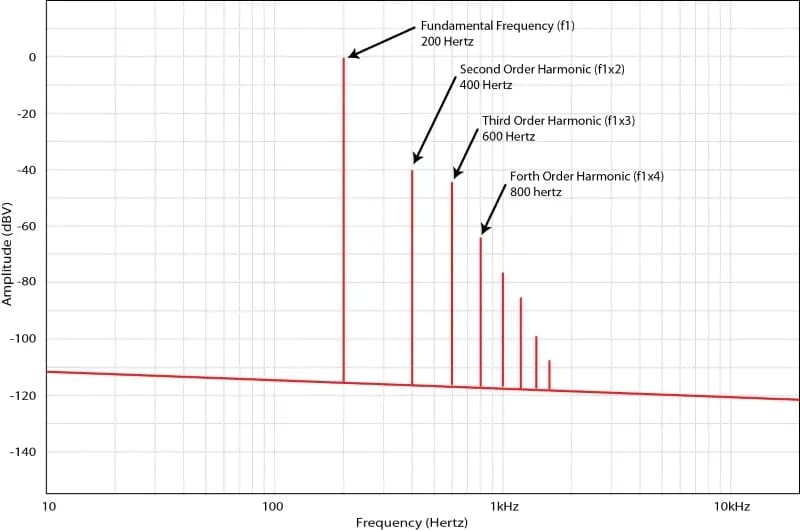
Published intermodulation distortion measurements are very rare in the car audio industry, but our research and testing have concluded that this information might be the most important in quantifying an amplifier’s accuracy. Unlike harmonic distortion, which quantifies the harmonic content of every frequency that passes through an amplifier, intermodulation distortion evaluates the creation of unwanted multiples of the difference between any two frequencies passing through an amplifier.
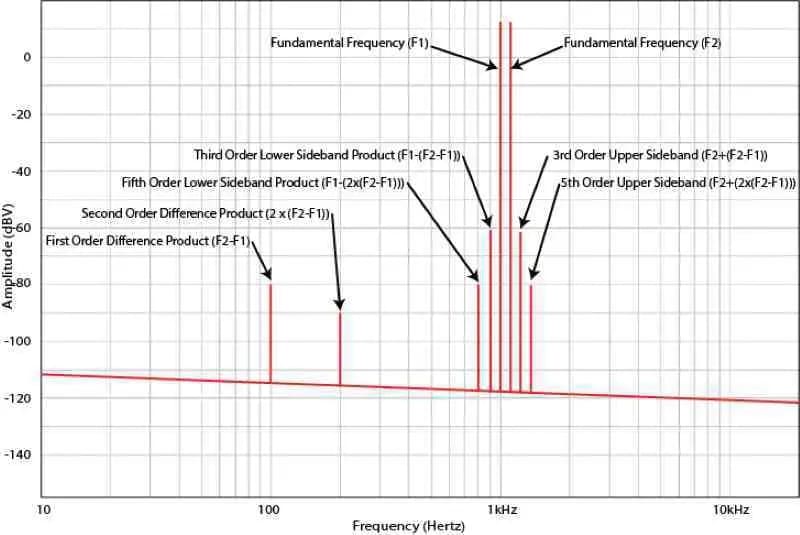
Warranty
Understanding the warranty is an essential factor any time you make a purchase. Most high-quality car audio products have at least a one-year warranty against manufacturing defects. Some units carry longer warranties when installed by an authorized retailer for that brand. Some companies offer a longer warranty when the amp is installed with one of the same brand installation kits.
The warranty is intended to cover issues with the amplifier that aren’t related to improper use or installation. Running an amplifier at impedances below its rating, using inadequately large power wires, short circuits, improper sensitivity settings, installations with inadequate cooling, damage from vibrations or shorts because of wire strands in the chassis shouldn’t be covered.
You’ll want to ask the shop that installs your amplifier what its installation warranty covers. Will they remove and reinstall an amplifier if there is an issue? Will the amplifier be replaced immediately with an identical or similar unit, or will it be sent in for service? Is the retailer covered for the shipping cost of sending the amp for service? Discuss these considerations with the product specialist you’re working with.
Picking a Good Car Audio Amplifier Isn’t Easy
There are dozens of companies selling car audio amplifiers with poor designs. These amplifiers are inefficient, noisy and often unreliable, and they usually don’t last very long. If the amp brand you’re looking at focuses on power ratings or cosmetics more than performance, reliability and features, you’re likely barking up the wrong tree.
The first step in picking an amp for your car is to visit a local specialty mobile electronics retailer. Find a knowledgeable product specialist and explain why you think you want an amplifier and what your expectations are for adding it. The specialist might ask questions about the existing audio equipment in the vehicle, even if it’s from the factory. They should also ask if you have future upgrade plans.
Once they suggest an amplifier, you can research its reliability and ask about auditioning the amplifier. You’ll want to pay close attention to noise or hiss that might be present. Those are things to avoid. The demonstration should sound tight and dynamic, with excellent tonal balance and lifeline dynamics. If it’s soft or overly warm, those are ominous signs.
Finally, finish up with your questions about the installation and the warranty. If you’re satisfied with the information you’ve gathered, book an appointment to install a good car audio amplifier in your vehicle.
